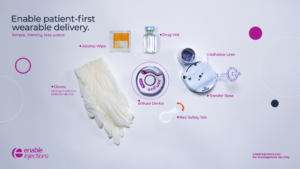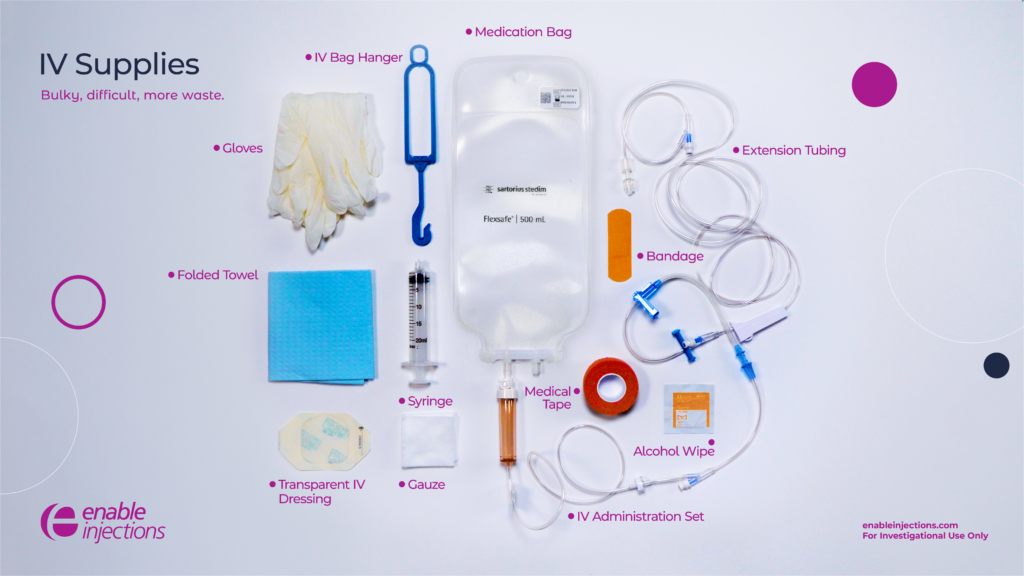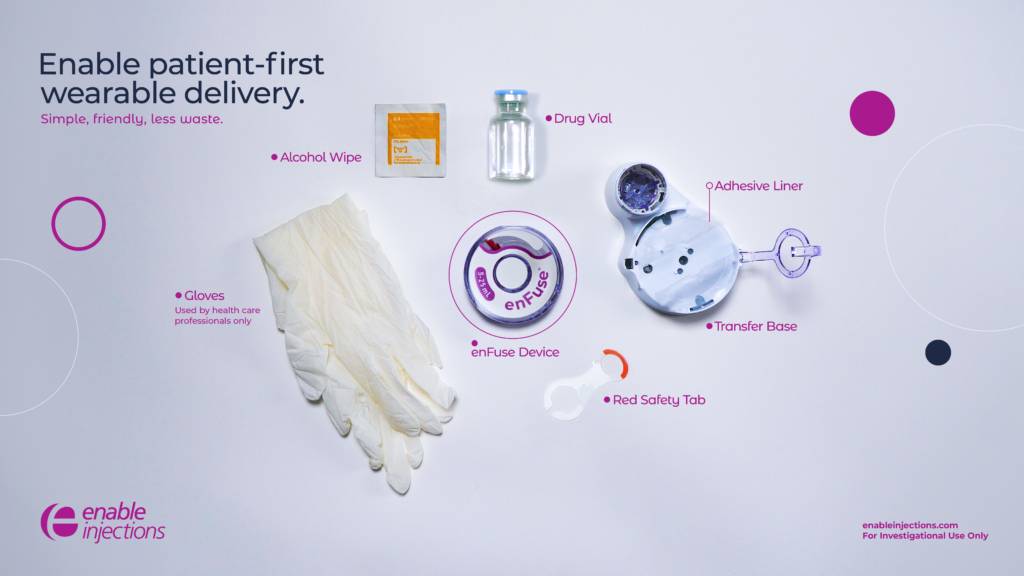
Sustainability Improvements in Drug Delivery: A Waste Comparison of IV vs. enFuse Large-Volume On-Body Delivery System
Climate change has been a concern on a global stage for years now and has been called “the biggest global health threat of the 21st century” by the British medical publication The Lancet.1 Despite health care’s mission to protect and heal, the industry as a whole is contributing to the excess of emissions and increase in global waste. However, implementing small changes has the potential to have a lasting impact around the world.
Health Care’s Role in Sustainability
Our environment plays a huge factor in public health, and yet, the health sector is contributing significantly to climate change. Through building construction and operation, energy and resource consumption, and waste generation, health care operations are a significant source of carbon emissions around the world. Health care’s climate footprint is equivalent to 4-5% of global net emissions, which would be the fifth-largest emitter on the planet if it were its own country.2,3 As a result of the COVID-19 pandemic, the levels of medical waste has increased up to 10 times in healthcare facilities according to a WHO spokesperson.4
Health care systems and the medical community must balance ensuring safety for each patient while also considering sustainability for the world. Certain things cannot be reused or recycled due to bio and hazardous waste, however, the medical community can work to reduce overall medical waste where possible.
More Supplies, More Waste
The general public may not realize the amount of supplies needed to care for even one patient, as hospitals generate over 29 pounds of waste per bed per day.5 For example, many people think of IV treatment as an IV bag, tubing, and a needle. In reality, a lot of supplies go into the entire process to ensure safety for the patient, including gloves, alcohol wipes, gauze, towel, bandage, syringe, medication bag, IV bag hanger, and an IV administration set with bag spike and connector, which are all single-use and non-recyclable. Not only does more supplies mean more waste, but it can also be cumbersome for health care workers to carry and organize. Plus, it can be overwhelming for patients to see the amount of supplies necessary for one treatment.

All these supplies are needed for a single IV administration and must be repeated for each patient and each administration. Additional supplies may also be needed if the initial IV insertion fails, causing the health care provider to repeat steps and supplies.
IV Waste vs the enFuse
The novel enFuse delivery system is a compact solution for delivering drugs potentially more efficiently and with reduced waste compared to traditional IV administration. The enFuse system can deliver high volumes of therapeutics, from 5-25 mL with a single device, and could potentially replace IV treatment for many medications, especially treatments that are needed for chronic conditions.
Rather than the large medication bag and the extra materials like bandages and gauze, the enFuse system utilizes an injector device, a transfer base (either syringe transfer or vial transfer), a small plastic tab, and an original medication vial. Gloves are used as a precaution only by health care professionals.

While the enFuse is a single-use device and must be disposed of properly after use, the overall amount of waste, when calculated by weight in grams, is reduced by using either the enFuse syringe transfer system or the enFuse vial transfer system compared to traditional IV administration.

Reducing Medical Waste with the enFuse
By replacing standard IV administration with the enFuse system, health care could reduce certain medical administration waste by 51% with the enFuse syringe transfer system and 22% for the vial transfer system according to the weight measured for each administration method.
The enFuse is designed to allow for self-administration at home by the patient, which could cut down on transportation needs for patients to and from a health care facility, as well as healthcare professionals’ time and capacity.
While infusions are one of many contributors to health care’s climate footprint, a small improvement can compound into a significant lasting change in the future.
References:
- The Lancet. (2009). A commission on climate change. The Lancet, 373(9676), 1659. https://doi.org/10.1016/s0140-6736(09)60922-3
- Watts N, Amann M, Arnell N. The 2019 report of The Lancet Countdown on health and climate change: ensuring that the health of a child born today is not defined by a changing climate. Lancet. 2019;394:1836–1878.
- Karliner J, Slotterback S, Boyd R, Ashby B, Steele K. Health Care Without Harm; Reston, VA: 2019. Health care’s climate footprint. How the health sector contributes to the global climate crisis and opportunities for action.
- Bateman, K. (2022, February 17). Covid-19 has caused a surge in plastic medical waste. Here’s what needs to be done about it. World Economic Forum. Retrieved December 6, 2022, from https://www.weforum.org/agenda/2022/02/medical-waste-plastic-environment-covid/
- Waste: Understand hospital waste streams, how to measure them, and how to reduce waste at your facility. . Practice Greenhealth. (n.d.). Retrieved December 6, 2022, from https://practicegreenhealth.org/topics/waste/waste-0
